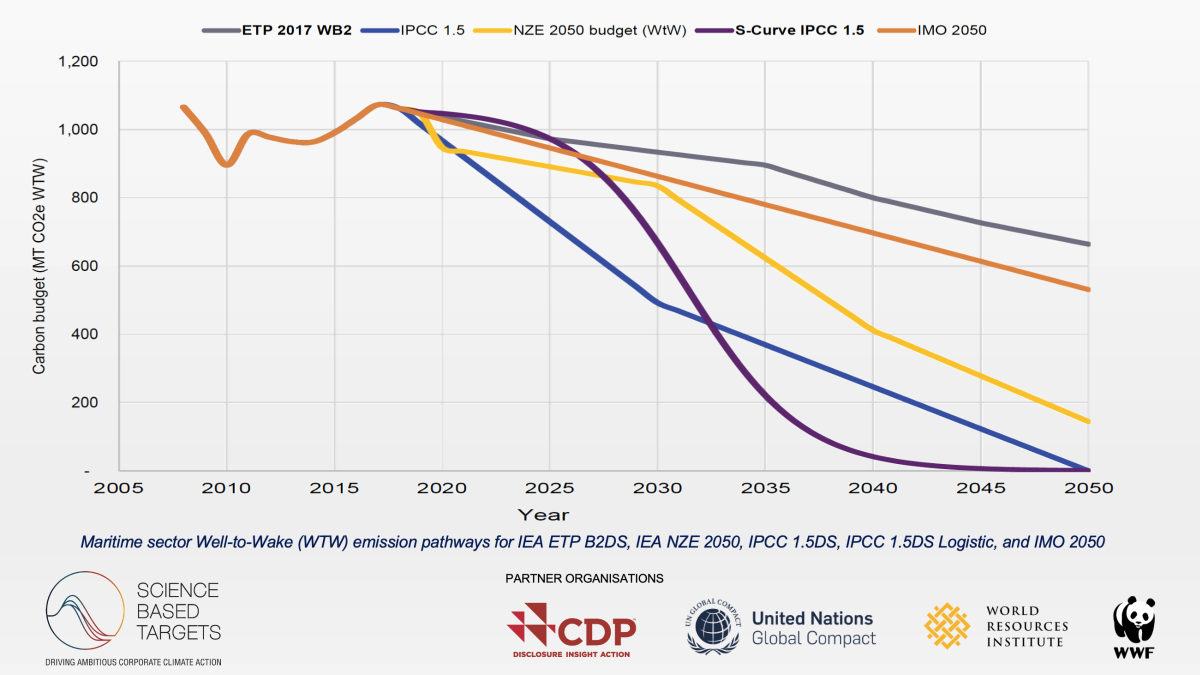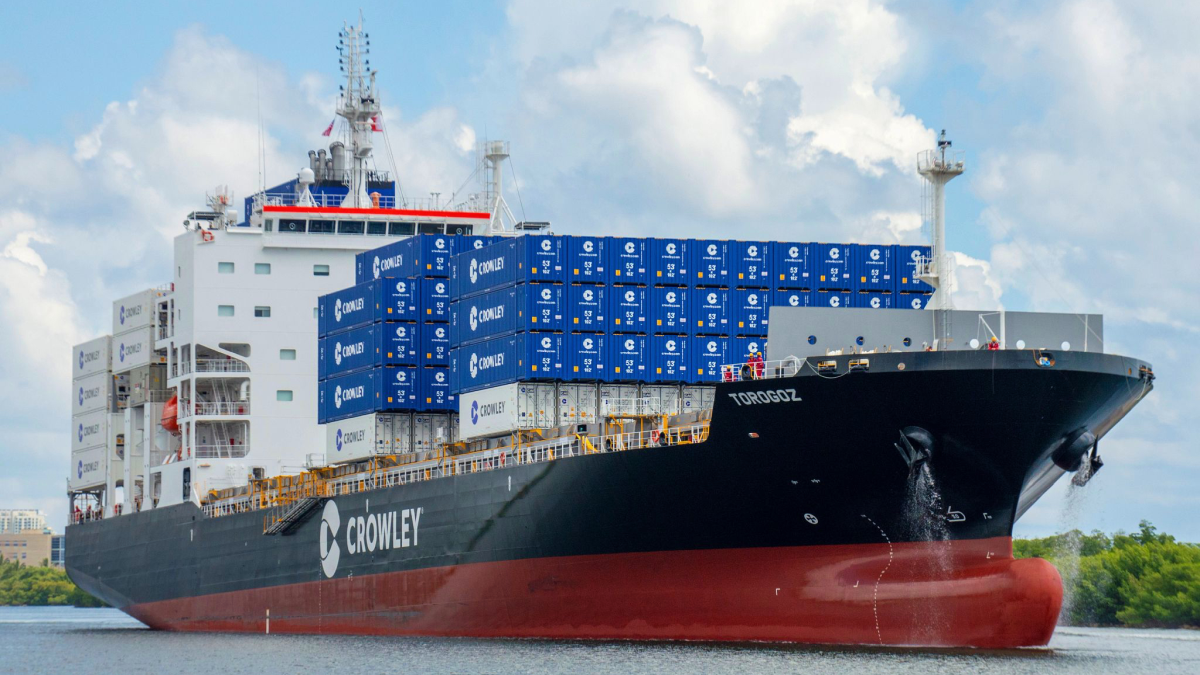Business Sectors
Events
Contents
Science-based emissions targets created for maritime sector
Science-based Target Initiative’s (SBTi) emissions reduction targets for maritime show that private sector corporations can align with 1.5°C limits by adopting strategies to decarbonise by 2040
The shipping sector specific tool is the first to provide corporations that operate, are associated with, or use shipping-related services with a concrete method to benchmark their activity against a 1.5°C global temperature rise target limit.
The new benchmarking tool offers a guide to these companies in setting their short-, medium- and long-term actions, according to maritime consultancy UMAS, which provided the technical input to the SBTi maritime tool.
"Adopting the SBTi targets enables long-term strategy and planning that can protect corporations against the risks of asset-stranding and technology-obsolescence that can arise from policy ambition that ratchets up over time (incremental target setting)," UMAS said.
The SBTi maritime tool is part of the Science Based Target Initiative -- a partnership that includes Carbon Disclosure Project (CDP), the United Nations Global Compact (UNGC), World Resources Institute (WRI) and the World Wide Fund for Nature (WWF) -- that firmly advocates for use of the most up-to-date climate science and scientific data in developing decarbonisation strategy and policy.
"The SBTi tools provide corporations with an approach that can enable and clearly communicate their adoption of a strategy unambiguously aligned with the science from [United Nations’] Intergovernmental Panel on Climate Change. The SBTi guidance and tools enable the recommendations from the High Level Expert Group on the Net Zero Emissions Commitments of Non-State Entities, released at Sharm el-Sheikh during COP27, which suggest that goals and net-zero alignment should be independently verified by third parties, which includes SBTi among others, to avoid ‘net-zero greenwashing’."
UMAS said that the tool, which includes upstream emissions and "all GHG emission species", captures all the impact of the combustion of maritime fuels and the use of energy to operate ships.
"The tool is based on the IPCC’s special report Global warming of 1.5°C, the most recognised and authoritative source of information on the scale of GHG reductions needed. That makes the SBTi tools the most ambitious sector-specific target in contrast to the levels of ambition in the IMO Initial Strategy, which aims for a minimum of 50% GHG reduction by 2050 on 2008 levels. Whilst ambition in the IMO’s strategy may increase through the strategy’s revisions, reliance on multilateral regulation alone is not sufficient for guiding and communicating a strategy that contributes to avoiding dangerous climate change," UMAS said.
Many corporations, for example through coZEV (Cargo Owners for Zero Emission Vessels), which includes major retailers such as Amazon and IKEA, have set long-term targets for their maritime freight to be zero emissions by 2040. The new SBTi targets will allow them to benchmark their progress in the short and medium term, including actions that maximise energy efficiency and transparently reporting on their progress against the trajectories.
"Shipping’s decarbonisation can be achieved by both improving energy efficiency and substituting the oil-derived fuels the sector currently uses with alternatives such as electricity and hydrogen-derived fuels. While many of the technologies to achieve this are mature, new energy supply chains based on low- and zero-GHG emission hydrogen are still scaling up. The shipping trajectories in the tool therefore take into consideration the rate of diffusion of new technologies and scalable zero emission fuels by basing the trajectory on an S-curve similar to the approach taken by the Getting to Zero Coalition. This means that carbon intensity reduction rates are slower for this decade, as new fuels and technologies emerge, but accelerate sharply in the 2030s, as those technologies scale up, to achieve decarbonisation by the first half of the 2040s," UMAS said.
Dr Jean-Marc Bonello, Principal Consultant at UMAS, said; “While the rate at which the carbon intensity of maritime transport needs to decline can feel daunting, this is what the science is dictating. Initiatives such as SBTi are providing a tool for companies to assess their performance and plan ahead to mitigate against costly changes to their operations too far down the line.”
Meanwhile, EU-based clean transport NGO Transport & Environment have published a study showing that 84% of ship traffic goes through the EU, US and China. Based on that figure, the group says that the three could work together to decarbonise 84% of the shipping sector with the appropriate regulations in place.
T&E sustainable shipping officer Jacob Armstrong said: “Efforts to decarbonise shipping at the IMO have so far been miserable. The need for consensus at the global level has brought us nowhere. But there is a much easier way to do it. With the vast majority of ships passing through Europe, China and the US, these leading economies can unilaterally regulate emissions without relying on the ineffective IMO.”
While China, Europe and the US only account for 40% of shipping emissions, the vast majority of ships call at one of their ports. T&E calls on the three economies to agree on measures to reduce their maritime emissions including carbon markets, pollution taxes, energy efficiency targets and zero-emission fuel standards to create a de facto global regulatory regime.
Related to this Story
Events
Offshore Support Journal Conference, Americas 2025
LNG Shipping & Terminals Conference 2025
Vessel Optimisation Webinar Week
© 2024 Riviera Maritime Media Ltd.














